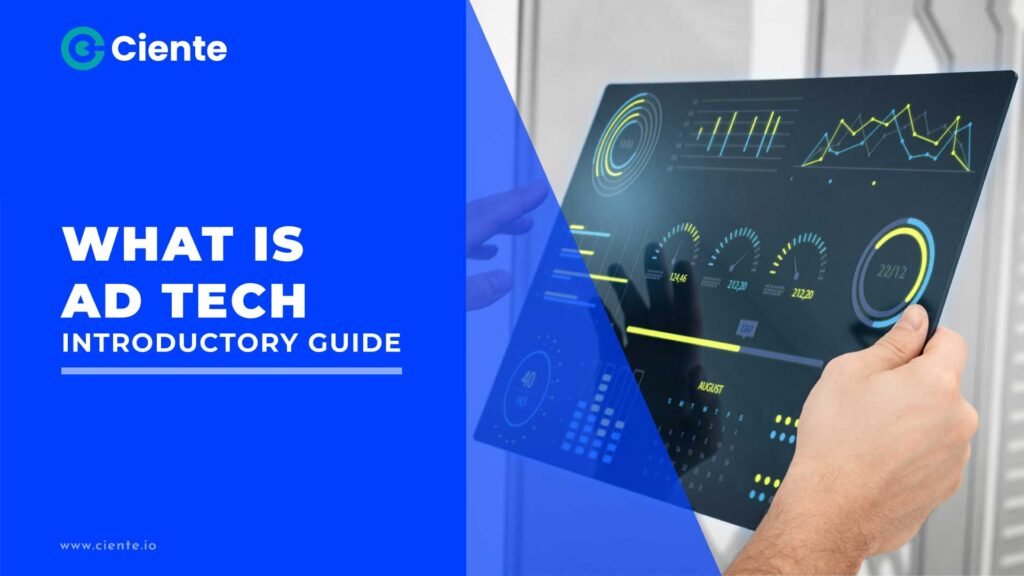Ad Tech is redefining several age-old marketing techniques and providing businesses with better tools to reach their customers. How can organizations take advantage of it?
Today, digital innovation is transforming the way most businesses and industry sectors operate. For marketers, data is the new oil. Data collection and analysis will be the foundation of all future services and business models by 2030. Despite this, 76% of marketers do not use data in their online marketing and targeting, even though businesses are continually collecting information about their customers. The failure of marketers and advertisers to fully utilize ad technology represents a significant waste of potential.
AdTech aims to change that. As the digital advertising business is undergoing a significant phase of development as a result of the rising amount of time customers spend on digital media, it is an excellent way of strengthening communication with clients. Statista predicts that global digital ad spending would surpass $645 billion by 2024. Marketers can use AdTech to target consumers, offer relevant ads, optimize profitability, and improve the efficiency of an ad campaign. This guide describes what AdTech is, what it entails, and how it may benefit organizations. Dive right in!

What is Ad Tech?
Ad tech, or advertising technology, refers to the software and tools that assist agencies and businesses in targeting, delivering, and analyzing their digital advertising efforts. It is the core of the digital advertising market, which GlobalData, a renowned data and analytics company, predicts will expand from $438 billion in 2021 to $1 trillion in 2030. Ad Tech solutions allow you to see the big picture of your campaign and maximize its effectiveness.
AdTech strives to develop data-driven marketing tactics that are personalized to the preferences of the target audience. It simplifies the increasingly complicated procedures of purchasing and selling online ads, allowing organizations to maximize their ROI by making the most of their budget. It is a collection of tools and platforms that marketers and advertising firms can utilize to maximize the effectiveness of their ad operations. Effective advertising campaigns leverage it to gather relevant data and present the most suitable advertisements to their audiences.

What does AdTech include?
Ad tech refers to a variety of technologies that help marketers, and media agencies, operate effective advertising campaigns. It includes the following:
The Supply Side (the publisher) and the Demand Side (the advertiser)
Advertisers have to purchase advertising space from media companies. Media-related businesses require a location to market their unsold inventory. Advertisers can use demand-side platforms (DSPs) to place offers on open advertising slots on a per-impression basis. Supply-side platforms (SSPs) enable vendors to add their inventory on a variety of platforms in an efficient and automated way.
Ad Exchange (the centralized point that streamlines the purchasing procedure)
When a brand wants to purchase or sell advertising space, it goes to an ad exchange, which acts as a marketplace for DSPs and SSPs. Ad exchanges enable programmatic ad buying and selling with real-time bidding. An ad exchange can provide any type of ad space, from textual content to video advertising.
Ad server technology (a repository of creatives for advertisements created with specific software)
Aside from the big players (DSP, SSP), another force in the advertising business is ad server technology, which is an inventory of creatives for advertisements that use certain software to post ads on websites whenever needed. The advertising provided is filtered by publishers and advertisers based on the intended audience, ad type, and demographic factors. Ad servers additionally keep track of how frequently an ad is shown to a specific user.
Benefits of AdTech
Until recently, the advertising industry had stayed unchanged for decades. Today, how advertisers put advertisements, how they pay for them, and the actual appearance of the advertisements themselves have all changed dramatically. The goal, however, is always the same: to reach a specific consumer market and attract their attention. There are numerous options for agencies to differentiate themselves in the age of ad tech. Ad tech data variety enables more detailed and appropriate targeting. To get the best possible results out of every ad campaign, it is also necessary to rely on reputable ad tech solutions and platforms.
The demand for effectiveness and scale in the domain of thousands of interactions on the internet drove the creation of ad tech. One significant benefit for organizations and their customers is an increase in client encounters. Brands can now integrate across all advertising channels using ad tech. The purchasing and selling of advertising spaces still take place in an online marketplace, but the introduction of digital advertising has added complexity to the process. Cross-platform consistency makes sure that marketers contact people frequently and effectively.
To manage real-time buying and selling at scale, automated platforms like DSPs and SSPs are required. Furthermore, ad tech and martech solutions are becoming increasingly linked to helping brands and/or companies reach their advertising and marketing objectives. Global ad tech spending is anticipated to reach $150 billion by 2023. To put it another way, it’s here to stay. Using ad tech data, agencies may dig down and target just those who are most likely to convert, while ignoring those who aren’t.
Wrapping Up
The advertising landscape is constantly evolving, offering advertisers new opportunities to reach their target demographic. Marketing executives face numerous obstacles as they struggle for consumers’ attention. AdTech holds immense promise for advertisers to enhance profits and boost ad campaign efficiency. While creative and engaging material is still required, AdTech allows advertisers to more accurately assess the effectiveness of an advertising initiative and make adjustments as needed. It also assists advertising in targeting individuals and generating better leads. If your company is not yet utilizing advertising technologies, there is no time more appropriate than now to get started.

